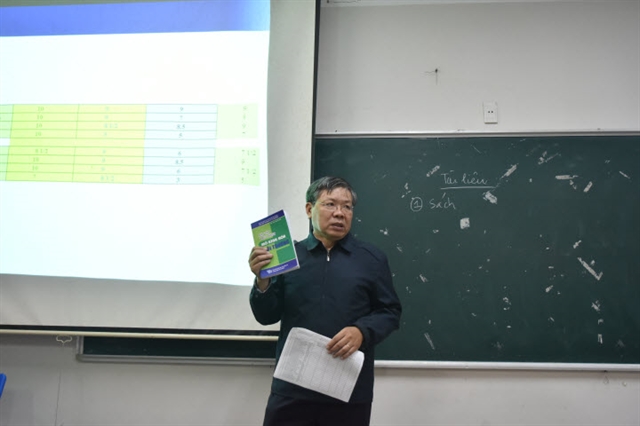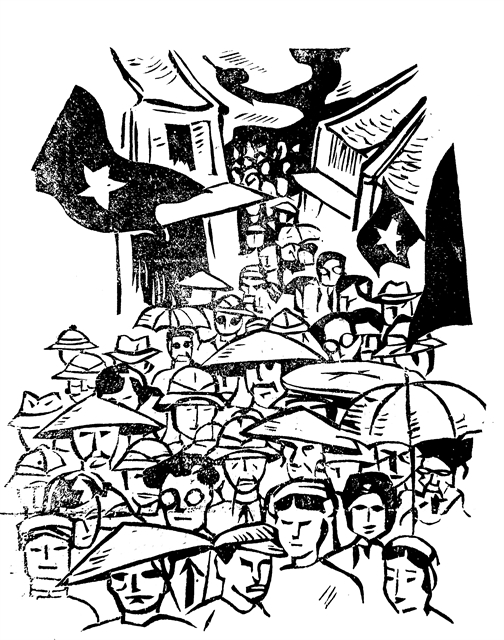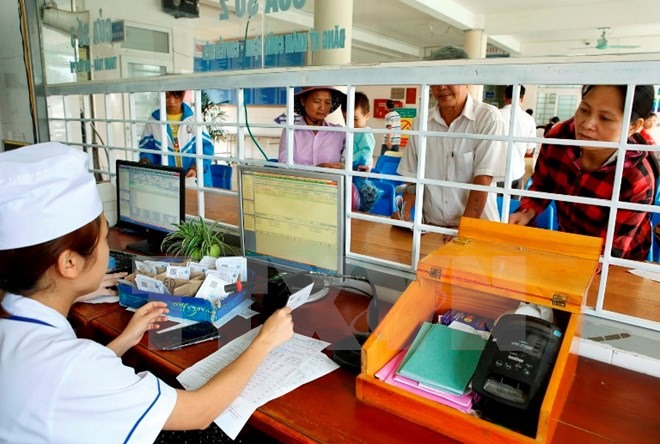 Opinion
Opinion

Dương Đức Tuấn, director of the Centre for Health Insurance Appraisal and Multi-level Payments in the North, under Việt Nam Social Insurance, tells Vietnamplus that “socialisation” in the healthcare sector has not proved to be very friendly to patients
Dương Đức Tuấn, director of the Centre for Health Insurance Appraisal and Multi-level Payments in the North, under Việt Nam Social Insurance, tells Vietnamplus that “socialisation” of the healthcare sector has not proven to be very friendly to patients.

What do you think of the Government’s policy to mobilise resources from the whole society to develop the healthcare sector?
I appreciate the policy. It has helped the healthcare sector acquire more advanced technology and raise the quality of its services. The new policy looks for financing of social services from all sectors so as to address the problem of funding shortage experienced by in public healthcare establishments in many province and cities.
Nowadays, many healthcare services and hospitals have up-to-date medical equipment, which are often leased to them with specific conditions attached, like mandatory purchase of biochemical agents supplied by the equipment owners. Other hospitals have benefited from grants or equipment gifted without conditions attached.
Although the Ministry of Health has issued Circular No 15 on management of medical equipment, it does not cover gifts or leased equipment. Meanwhile, the socialisation policy has mainly taken the form of medical equipment being leased to hospitals by the private sector.
What are the challenges the sector is facing in the management of this socialisation process wherein equipments are leased and the quality of service offered by public healthcare facilities differs based on the money that patients can pay?
In my opinion, the concept of public and private hospitals should not be mixed. A hospital which is a profit-making joint-stock company must operate in accordance with the Law on Enterprises, while a public hospital offers public service to the general public.
However, the concept of private and public hospitals in Việt Nam is sometimes misconstrued.
If you visit two major public hospitals in Hà Nội, like the Bạch Mai Hospital or the Medical School Hospital, you can see wards in which three to five patients take turns to share a bed - two lie on the bed while the other three lie on the floor. But in certain wards where patients pay more, there are well furnished rooms, like in a hotel, that is shared by just one or two patients.
These two are public hospitals and the Government has invested a lot of money in their infrastructure and in paying their water and electricity bills. However, people with and without money get different treatment.
What are the problems that have surfaced with the leasing of medical equipment from private entities? And where?
As far as I know, problems have surfaced in Hà Giang, Thái Bình and Sóc Trăng provinces. As the socialisation policy is implemented, healthcare costs and spending have skyrocketed, but patients are not spending any less time in the hospitals.
In my opinion, the socialisation policy is pushing health workers, including doctors, to prescribe more expensive services so as to increase revenue and repay the private investors.
As we all know, when a hospital uses leased equipment, it must make a commitment to buy chemical agents and test kits from the lessor company for a certain period of time, a year or two, for instance. Under such conditions, whether the patients actually need it or not, doctors are almost bound to prescribe the use of the leased equipment.
Can you give us some specific examples of this happening at a public hospital?
Last year, during an inspection in Thái Bình Province, we read in a contract signed between the hospital and the provider of diagnostic equipment that the hospital had to use tests and test kits worth a certain amount of US dollars within the first quarter. The contract also said clearly that in the following quarters, the cost must increase by a certain percentage.
We realised this mechanism was wrong, but didn’t have any tools to correct it. When we reported the issue to the Ministry of Health, the only answer we received was that “this issue has not been regulated in the Circular 15”. So, in the end, we couldn’t do anything about it.
How does Việt Nam Social Security plan to address this problem?
The Việt Nam Social Security has no official data on the use of leased equipment in hospitals nationwide. Only when the hospitals send financial reports to reclaim fees do they specify what equipment and machinery has been used and whether is was paid for with the State budget or leased from private entities. In such cases, the only way for us to verify claims is to go directly to the hospital.
In other words, until now, there is no way to effectively manage the use of leased hi-tech equipment in hospitals and other healthcare facilities.
The ministry has only sent a letter calling on all health facilities and provincial and city health departments to tighten controls over the “socialisation” of hi-tech equipment. The ministry is said to be drafting another circular on the management and use of “socialised” healthcare equipment. — VNS